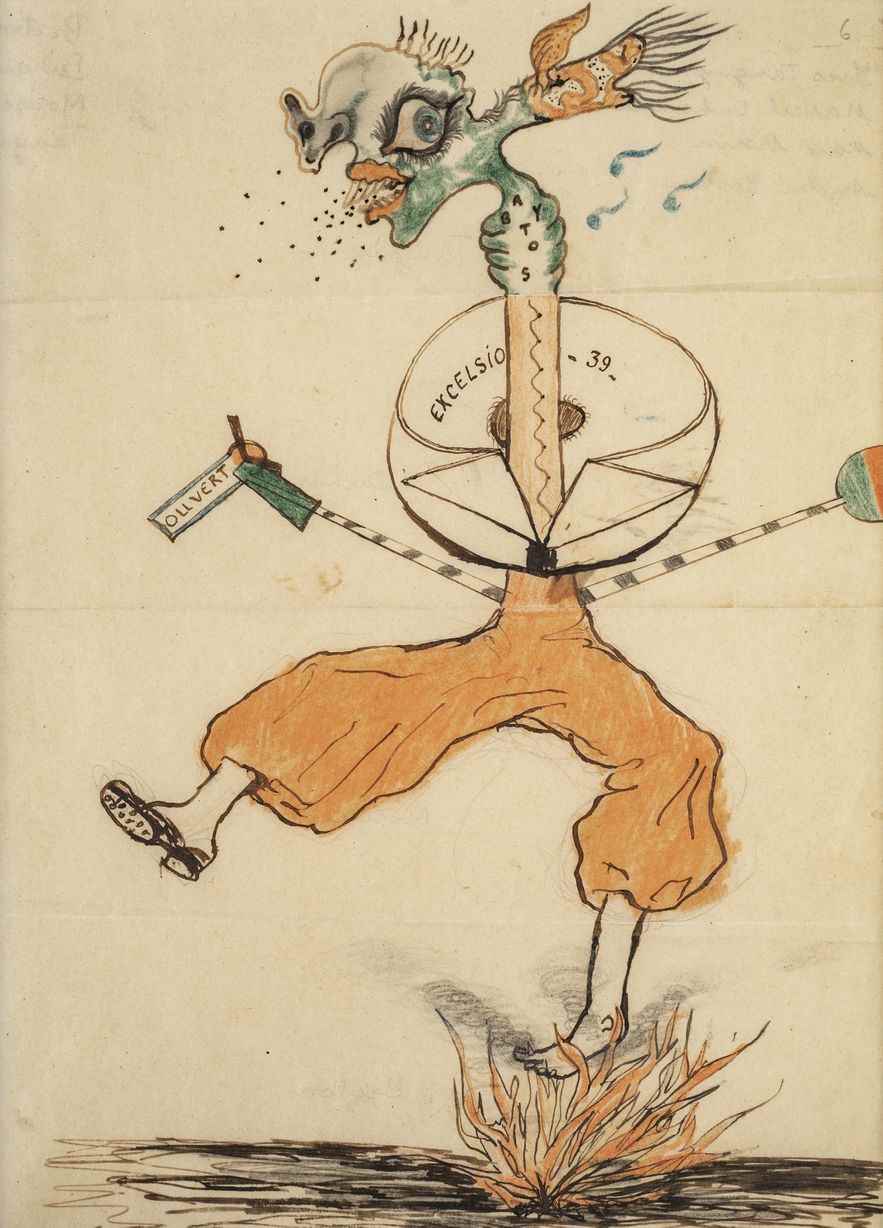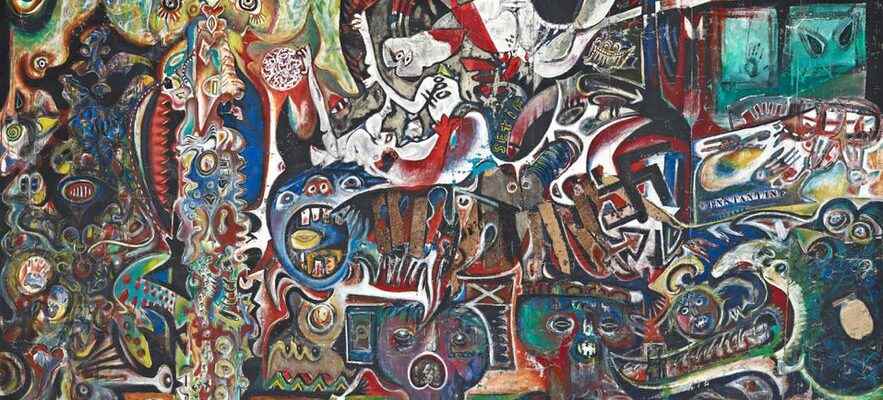They remain almost invisible on the art market and difficult to classify in one category or another. They do exist, however, these collective creations born of friendship, fortuitous or deliberate encounters, and particularly during the 20th century when artists, poets, filmmakers produced productions as spontaneous as they were experimental.
These collaborative works, the Mucem, in Marseille, puts them in the spotlight, under the leadership of the curator Blandine Chavanne and the visual artist Jean-Jacques Lebel, pioneer of the happening in Europe and co-author of Large Collective Antifascist Painting of 1960 against colonialism and torture. Since it could not be moved to Marseille due to its dimensions (5 meters by 4), the emblematic canvas is evoked here via the documentary by Hamid Bousmah, The Traces of the Ordeal (1997) and the Manifesto of the 121 for the right to insubordination in the Algerian war. It is from Large Table that the marshals unrolled the thread of the course. It was a question of “reflecting on other works due to artists who have undertaken to say something different through choral work” to “move from artistic self-management to a generalized self-management in all areas of existence” , comments Jean-Jacques Lebel.
Jean-Jacques Lebel, Enrico Baj, Roberto Crippa, Gianni Dova, Erró, Antonio Recalcati, “Grand Tableau antifasciste collective”, 1960. Excerpt from the film by Hamid Bousmah, “Les Traces de l’Epreuve”, 1997.
/ © ADAGP, Paris 2022; © 1997 – IDEA Productions / IVP / HB
The exhibition Friendships, collective creativity thus opens with thezutic album, a satirical work committed in the Latin Quarter, in the middle of the Commune, by some twenty rebellious poets, including Arthur Rimbaud, Paul Verlaine, Charles Cros and Germain Nouveau. It is “one of the first collective works heralding the modern spirit in Europe”, which sees the birth of the Exquisite Corpse by André Masson and Yves Tanguy in 1925. The famous “folded paper game” has had many variations over the decades, until it inspired a quartet from free figuration, formed by Robert Combas, Erik Dietman, Philippe Favier and Fabrice Hybert, on the occasion of the 1998 FIFA World Cup.

André Breton, Marcel Duhamel, Max Morise, Yves Tanguy, “Exquisite corpses”, circa 1928.
/ © Adagp, Paris 2022 / Seroussi Collection
Another era, another game, the one called “from Marseille”, created in 1941 by a group of artists and writers – André Breton, Victor Brauner, Oscar Dominguez, Jacqueline Lamba… – in search of derivatives while waiting for a boat to leave France occupied by the Nazis. Further on, some fifty creators sign, supporting illustrations, The eye cacodylate, a collegiate creation launched in 1921 by Francis Picabia. Visiting artists, musicians, writers and comedians take part. Because Picabia, then suffering from ophthalmic shingles and confined to his home, invites his friends to put their initials on a canvas mounted on an easel next to a pot of paint. Everyone has a great time, like on a leg in plaster cast that each of us has one day covered in graffiti. A “collective artistic game exemplary of a paradigm shift accessible to all, signatures and collages dialoguing freely”, underlines Blandine Chavanne.

Francis Picabia, “L’Œil cacodylate”, 1921. Initials by Marcel Duchamp, Tristan Tzara, Gabrielle Buffet, Georges Ribemont-Dessaignes, Marthe Chenal, Benjamin Péret and many others.
/ © Adagp, Paris 2021 / photo © Center Pompidou, MNAM-CCI, Dist. RMN-Grand Palais / Jacques Faujour
The commissioners excluded constituted movements, couples and siblings. Hence the immediacy of the works, uneven but necessarily interesting from the contextual angle of their creation. In this respect, the delirious productions of Dieter Roth and Arnulf Rainer in the 1970s, for which the rule is to destroy what the other has just done in order to achieve something “not bad”, stand out. of heiresses of Dada. More moving is the Beuys Vox (1961-1986), subtitled Portrait of a friendshipin which the South Korean Nam June Paik pays homage to Joseph Beuys, who died in 1986. The installation, rich in thirteen works by Paik, four by Beuys and one by John Cage, is one of the centerpieces of the exposure.
